Tranceducer™
and CognitiVR™
A medical device & therapeutic method
About
Virtual Reality headsets allow people to bring created realities into their real life experience. The Tranceducer™ device (patented) uses cutting edge technology to present a therapeutic environment to treat chronic pain.
The Tranceducer™ is a virtual mirror box that allows the subject to experience their own virtual body as a ‘real body’ that they both inhabit and see in a mirror. VR embodiment implies that the person cannot tell the difference between the virtual body and their own body. Therapeutic intervention in the virtual environment translates to change in the brain's experience and activity.
CognitiVR™ uses everything that we currently know about pain and it's treatment and tailors the VR experience for maximum therapeutic advantage.
We start with our full day training.
We then introduce individualised therapeutic VR experiences. The client is led through this experience by a trained professional . Treatment takes place every other day over three weeks.
The aim of the treatment is firstly to induce pain relief
using the Tranceducer™ and then completely retrain the person’s pain response using CognitiVR™.
The Innovate Pain Clinic is now open in Edgecliff NSW.
We are accepting referrals for our comprehensive pain management system.
If you are interested in a free 15 minute screening please contact us.
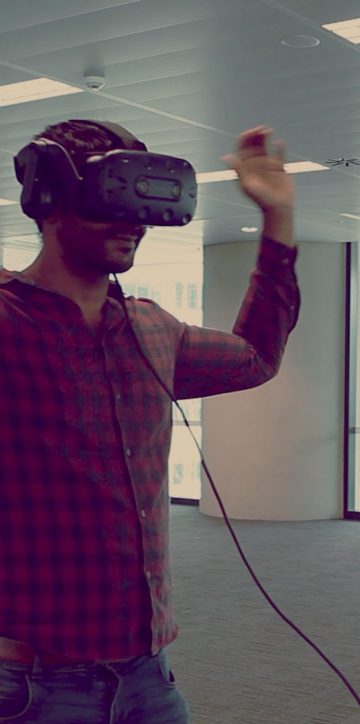
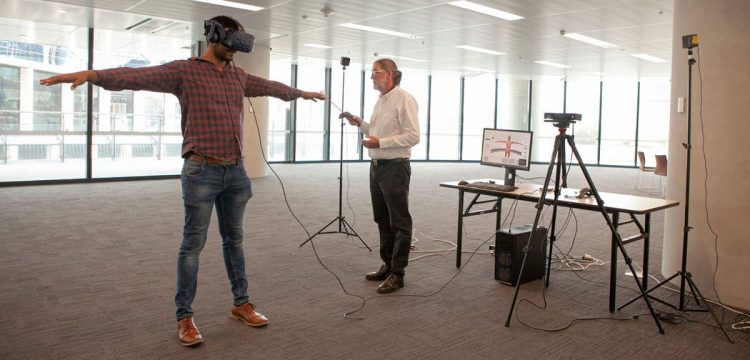
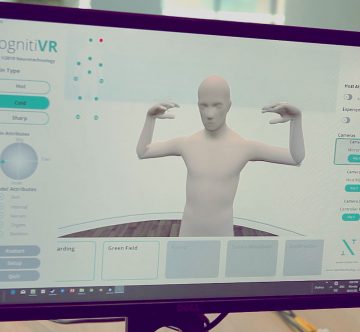
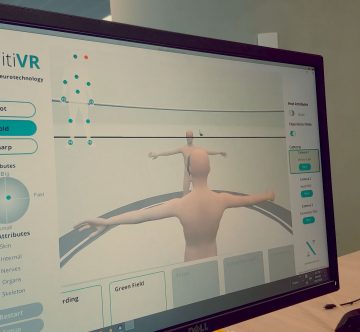
Our Pain Model

What makes our pain model different? We understand pain using Neuroplastic Theory. Neuroplasticity is the idea that our brains and nervous systems are capable of continuous change throughout our lives.
So if we took a picture of any one of our brains and nervous systems today, it would look a certain way. If we then took up the piano or running until we were good at it and took a picture then, we would find those parts of the brain devoted to piano or running were ‘larger’ and the brain’s capacity to operate the fingers or the leg muscles would be ‘stronger’.
Similarly if we took a picture of your brain before you had pain, it would look a certain way. After experiencing pain for a long time, the parts of the brain responsible for experiencing the pain both in the brain and in the body, would be bigger, more sensitive and more reactive. (Your brain and your body would become 'expert' in pain.) Conversely if you stopped running or playing the piano, the skill would disappear and the brain would return to it’s prior state. The same would occur with pain. This opens up for us, the possibility of retraining the brain. This is where the Tranceducer ™ fits in.
It is scientifically well established that Virtual Reality (just being in a VR environment) has an analgesic effect. VR technology is currently being used when people are having procedures, giving birth etc. The Tranceducer™ and CognitiVR™ leverage the power of VR to retrain the brain and body.
There is NO current model for the successful treatment of
pain. If the cause of the pain is known, there can be a physical intervention. All other
strategies simply manage pain. Most interventions are invasive (surgery), costly
(ongoing therapy) or transient (drugs) and have limited success. The
Tranceducer™ and CognitivVR™ together offer to solve a problem currently
without solution. Chronic pain of all forms can be resolved or reduced using
this neuroplasticity-based methodology. It is a completely novel and disruptive
approach. It is non-surgical, non-invasive and does not use drugs.
The Problem of Pain
Scientific Papers
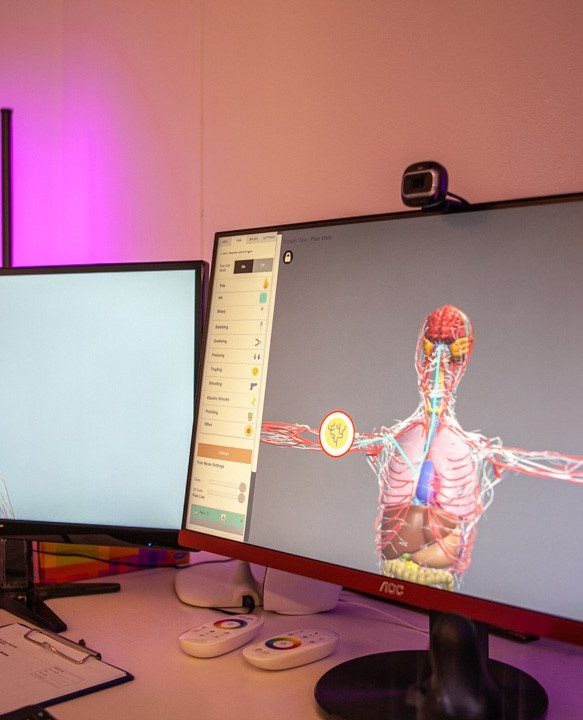
Our company, products and services are founded based on scientific research and application.
These are our white paper, patents and certification:
Our research sources:
- A controlled pilot study of the utility of mirror visual feedback in the treatment of complex regional pain syndrome (type 1)
- A Virtual Reality Intervention for the Treatment of Phantom Limb Pain: Development and Feasibility Results
- Brain resting state is disrupted in chronic back pain patients
- Central Sensitization: A Generator of Pain Hypersensitivity by Central Neural Plasticity
- Central Sensitization in Knee Osteoarthritis: Relating Presurgical Brainstem Neuroimaging and Pain DETECT-Based Patient Stratification to Arthroplasty Outcome
- Combination of Pain Location and Pain Duration is Associated with Central Sensitization-Related Symptoms in Patients with Musculoskeletal Disorders: A Cross-Sectional Study
- Effect of Pain Reprocessing Therapy vs Placebo and Usual Care for Patients With Chronic Back Pain A Randomized Clinical Trial
- Evaluation of the Effectiveness of a Novel Brain-Computer Interface Neuromodulative Intervention to Relieve Neuropathic Pain Following Spinal Cord Injury: Protocol for a Single-Case Experimental Design With Multiple Baselines
- Feasibility And Acceptability of Virtual Reality for Cancer Pain in People Receiving Palliative Care: A Randomised Cross-Over Study
- Illusory resizing of the painful knee is analgesic in symptomatic knee osteoarthritis
- Neurophysiologic Evidence for a Central Sensitization in Patients With Fibromyalgia
- The short-term effects of head-mounted virtual-reality on neuropathic pain intensity in people with spinal cord injury pain: a randomised cross-over pilot study
- Virtual reality and chronic low back pain
- Virtual reality and pain management: current trends and future directions
- Virtual reality as an analgesic for acute and chronic pain in adults: a systematic review and meta-analysis
- Immersive interactive virtual walking reduces neuropathic pain in spinal cord injury: findings rom a preliminary investigation of feasibility and clinical efficacy

© 2023 Neurotechnology Pty Ltd


